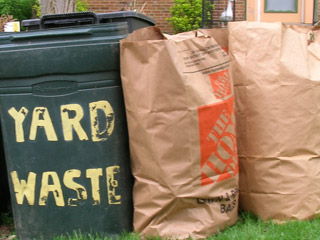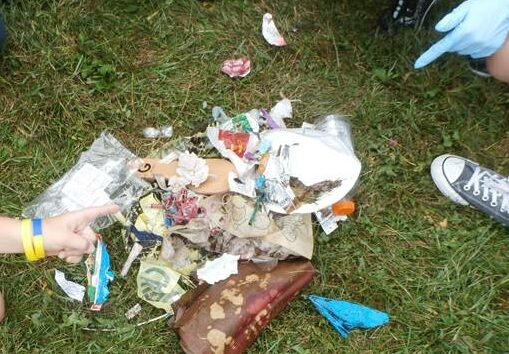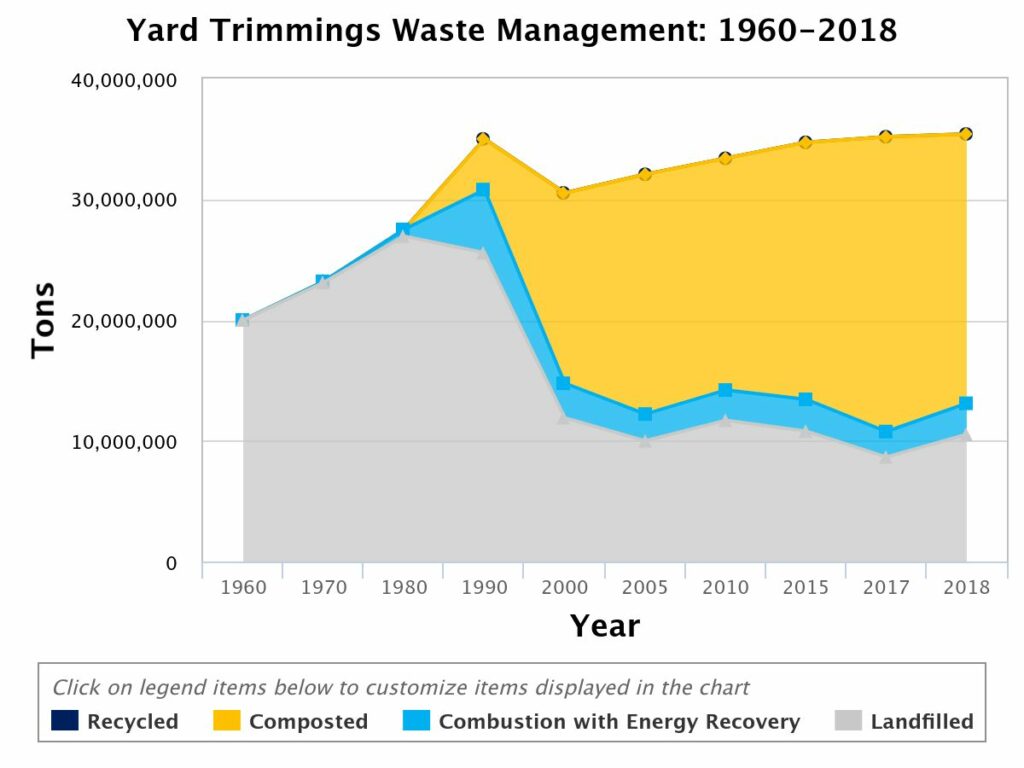ABC's of Recycling,
Y is for Yard Waste, or Should We Say, Trimmings?
Jan 29 2024
Spring is just around the corner. And so is garden cleanup.

It’s almost time to start pruning shrubs and trees to make way for new growth. Raking damp leaves away from beds. Cutting down the last stems of winter-dried perennials. The garden creates a lot of waste.
But wait! That stuff isn’t really “waste,” at all. A better name might be: yard trimmings.
All those leaves, grasses and sticks are organic matter that return nutrients and microbes to the soil over time. The best way to handle them is to let them decay into your gardens’ soil. A compost area can help with that. A pile of yard trimmings tucked behind an evergreen or shrub hedge can feed your soil, provide habitat for beneficial insects and save you money. No need to buy brown bags or yard stickers for curbside municipal composting.
But what if you don’t have the space to compost all the stuff your yard produces, especially when so much comes all at once in the spring and fall? That’s a good time to use curbside composting.

What goes in a Brown Yard Waste Bag?
Those brown bags can accept leaves, tomato vines, grass, and even smaller sticks. Larger branch prunings are better bundled and tied with twine. Pro tip: no metal twine.
Brown bags should never have lumber or garden tools tossed in there. (Who thought that was a good idea? Just because it has a wooden handle doesn’t make it yard trimmings.) And of course, no litter!
Plastic pots from spring planting are also not allowed in brown bags. But the good news is, many garden centers accept plastic pots for reuse.
The value of separating yard trimming material from landfill has become clear to local governments. Why pay to send materials to landfill when you can compost and turn the material into useful soil amendment? The Illinois Food Scrap and Composting Coalition has lots of information on how large scale composting is done, as well as a resource page with information on where to buy compost.
Remember, SCARCE always has compost for sale at the Growin’ Green Garden Market in the spring.
This chart on Yard Trimmings, from the EPA website, shows how municipal composting has grown in the last twenty years. What a difference!
Did you know some towns in DuPage County allow food scraps to be placed in with the yard materials? That’s great news for people who don’t have a spot for a compost pile in their yard. For example, the City of Wheaton publishes a list that includes “Yard Waste, Leaves, Food Scraps & Organics” which can be put out at the curb from the first full week of April through the second full week of December.
Check your town’s yard waste recycling information to learn exactly what you can compost.
It’s time to start turning yard waste into garden gold!

